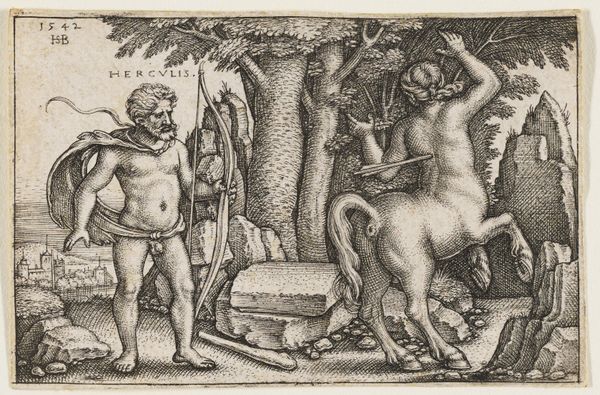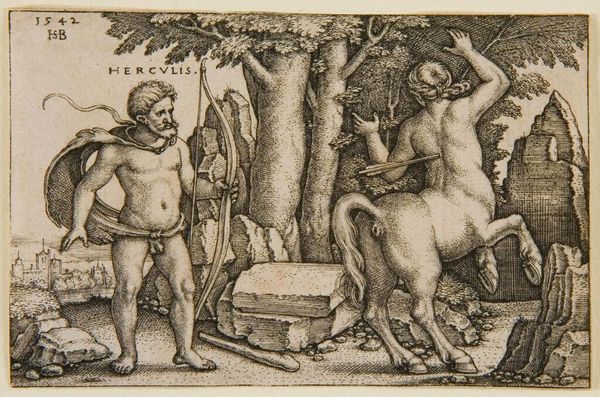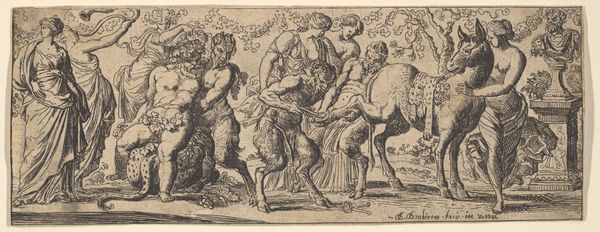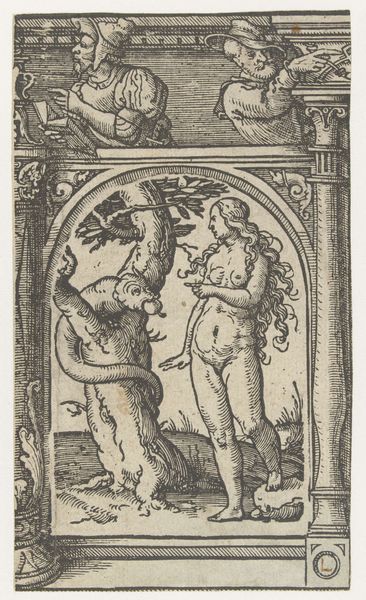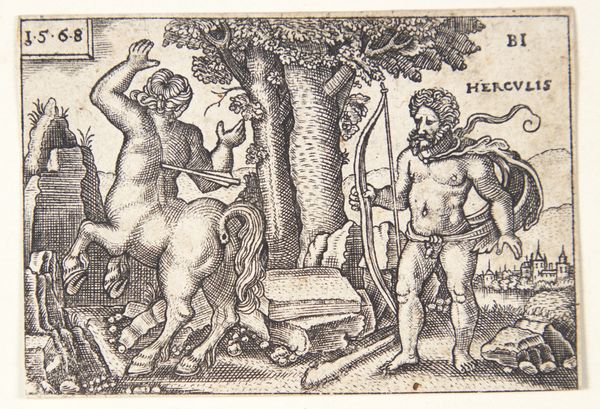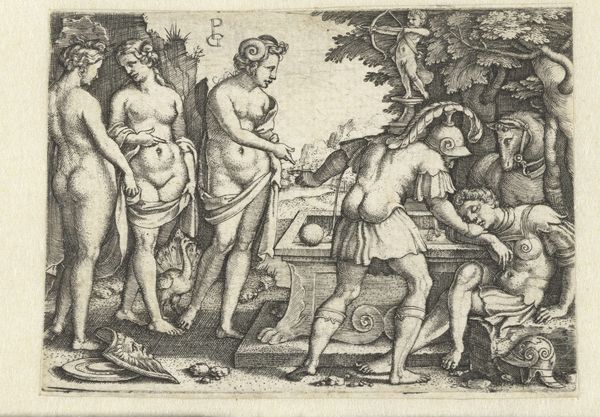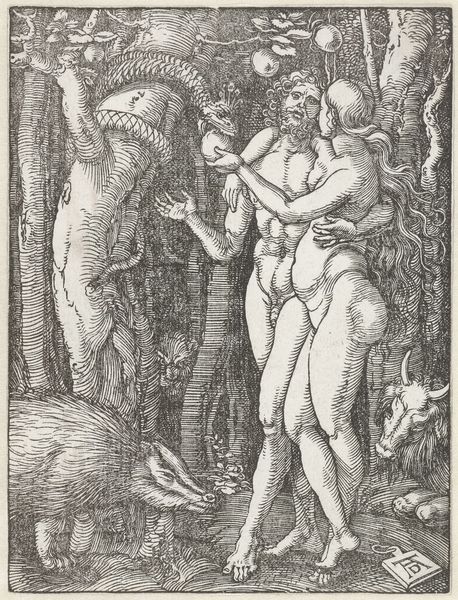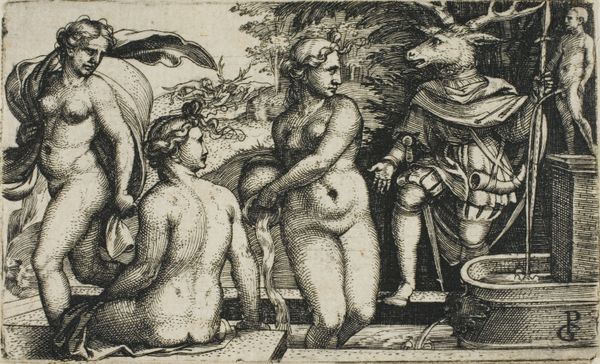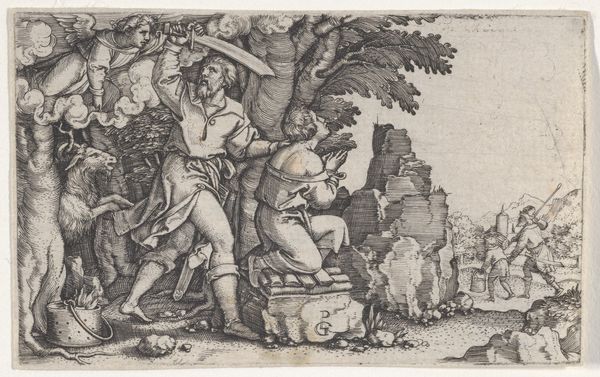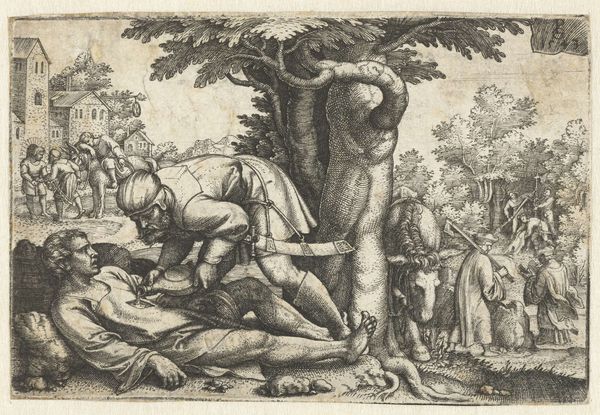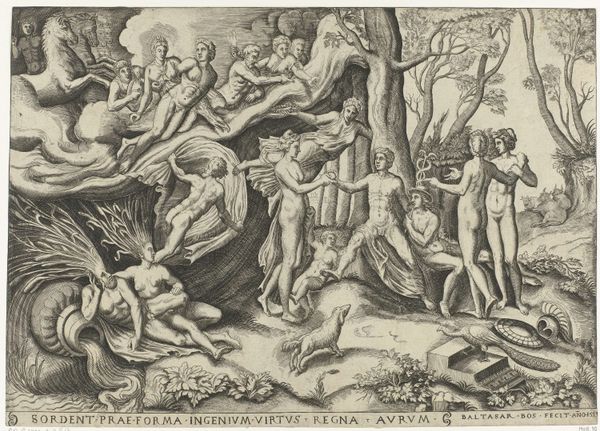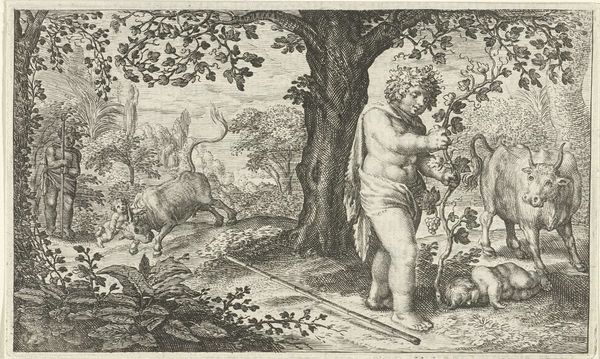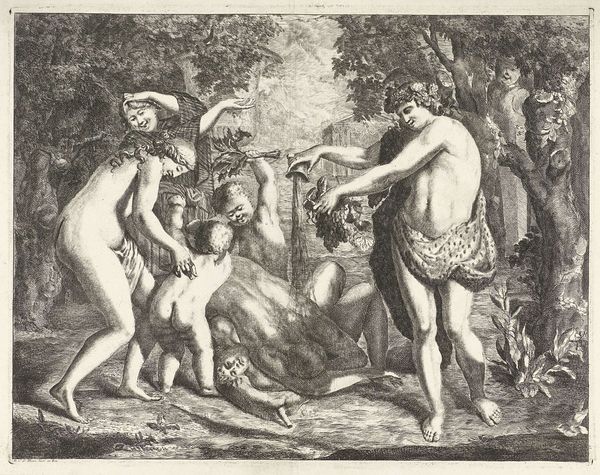
Dimensions: 50 × 78 mm (image/plate); 52 × 79 mm (sheet)
Copyright: Public Domain
Curator: Let’s examine "Hercules and Nessus, from The Labors of Hercules," an engraving dating to 1542, created by the German artist Sebald Beham. Editor: It strikes me as a scene filled with tension, even brutality. The centaur appears contorted in pain, trying to escape Hercules' arrow. There's a certain theatrical quality, don’t you think? Curator: Indeed. Beham's work appears at a crucial time when the printing press democratized visual culture. Consider the subject. Hercules, the epitome of masculine virtue and strength, vanquishes Nessus, the lustful centaur, a creature representing untamed male desire and the dangers it poses to women, symbolizing Deianira’s abduction. The socio-political context emphasizes patriarchal norms and control over female sexuality. Editor: And the landscape, too, appears to emphasize the drama unfolding in the foreground. How does this print function within the German Renaissance, especially during the rise of Humanism and religious reform? Was it commenting on social issues? Curator: Absolutely. The "kleinmeister," or "Little Masters," like Beham, often infused their relatively small prints with humanist values. While Beham embraced Lutheranism, these images were commissioned by a more diverse market of wealthy merchants. The small size would mean it could have circulated in books as illustrations for private readings of the myths. It underscores the period's moral anxieties related to religious devotion and changing social behaviors. Editor: I see a commentary on the human condition within this historical retelling. What do you think the choice of Hercules signifies within a cultural shift? Curator: Hercules embodies the ideal of the Renaissance man. He conquers both physical and internal conflicts. This specific image allows a moral reflection for the viewer; virtue triumphs over raw desire. I'd venture that there's a didactic purpose here to shape personal piety. Editor: Perhaps the visual storytelling makes the ethical arguments more readily available and adaptable to a growing reading and literate public. Thanks, that’s incredibly helpful! Curator: My pleasure.
Comments
No comments
Be the first to comment and join the conversation on the ultimate creative platform.
